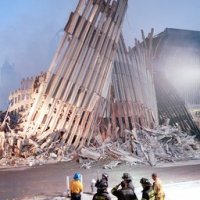jar546
CBO

The terrorist attacks of September 11, 2001, had a significant impact on building codes and building safety regulations in the United States. The destruction of the World Trade Center towers and the collapse of other buildings in the immediate vicinity revealed a number of shortcomings in existing building codes and safety standards.
As a result, many studies were performed in the aftermath of the attacks to determine the causes of the collapse and identify ways to improve building safety.
One of the most significant changes made to building codes as a result of these studies was the adoption of more stringent requirements for the structural integrity of buildings. This included increasing the minimum thickness of steel beams and columns, and increasing the number of connections between structural elements.
Another change was the inclusion of more detailed requirements for fire protection, including the use of fire-resistant building materials and the installation of fire sprinklers and smoke alarms in buildings.
Additionally, the codes have been updated to include the need for additional emergency egress and stairwells, as well as better communication systems for emergency responders.
Furthermore, new codes were also developed to better protect tall buildings from progressive collapse, which is a failure that spreads from one structural element to another, causing a building to collapse.
In summary, the terrorist attacks of September 11th, 2001, led to several changes in building codes, these changes are intended to increase the overall safety of buildings in case of a catastrophic event such as a terrorist attack, fire, or natural disaster. These changes include increased structural integrity, fire protection, emergency egress, and stairwells, and communication systems for emergency responders.
